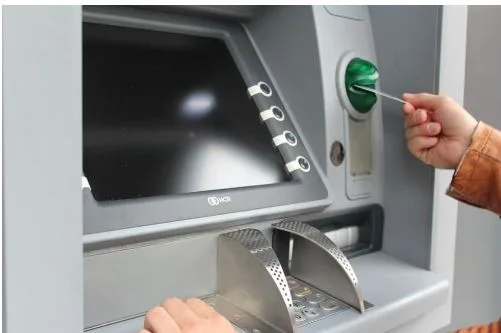How Prepayment Gas Meters Work in the UK a Complete Guide
Introduction
Managing household energy in the United Kingdom has become a growing challenge in the face of rising wholesale prices, the cost-of-living crisis, and increasing consumer demand for transparency. One solution that has been widely adopted is the prepayment gas meter UK system. This strategy allows residents to pay for gas usage in advance rather than waiting for a monthly or quarterly bill.
This payment method has existed in the UK for decades but has evolved considerably. Today’s prepayment meters, especially when upgraded to smart technology, are designed to provide households with more control, clearer budgeting tools, and enhanced consumer protections. However, they are not without their challenges.
This report provides a comprehensive breakdown of:
- What are prepayment gas meters?
- How does a prepayment meter work in the UK?
- Installation procedures and costs.
- Top-up methods and payment innovations.
- Advantages and disadvantages.
- Smart prepayment meters and future trends.
- Government regulations, consumer protections, and supplier obligations.
- Practical guidance for households considering or already using a prepayment system.
By the end, you will have a clear, professional understanding of prepayment gas meters, enabling you to make informed choices about your home energy management.
What is a Prepayment Gas Meter UK?
A prepayment gas meter is a specialised utility device that requires households to pay for gas supply before consumption. This contrasts with traditional credit meters, which allow energy use first and bill settlement later.
The principle is simple: no credit means no gas supply. Once topped up, the meter deducts charges in real time as gas is used, alongside daily standing charges and any agreed repayment amounts if the household owes money to the supplier.
Why Prepayment Exists
- To give financial control to households who prefer “pay-as-you-go” energy.
- To reduce the risk of energy debt accumulation for suppliers.
- To provide an option for tenants or residents in short-term accommodation.
- To support vulnerable customers with structured repayment options.
Scale of Usage
According to Ofgem, as of 2024, around 4 million households in the UK rely on prepayment meters for their gas or electricity supply. Many belong to lower-income or financially vulnerable groups. This highlights the importance of consumer protections, fair pricing, and transparent processes within this sector.
How Does a Prepayment Gas Meter Work UK?
The functioning of a prepayment gas meter can be compared to a prepaid mobile phone; credit must be loaded before service can be accessed.
Here’s a step-by-step explanation:
- Purchasing Credit
- Customers buy credit from authorised locations such as PayPoint, Payzone, or Post Office counters.
- With smart meters, credit can also be purchased online or via mobile apps.
- Transferring Credit to the Meter
- Traditional meters use plastic keys, tokens, or cards, which are loaded at the vendor and then inserted into the meter.
- Smart meters update automatically once a top-up is purchased digitally.
- Deduction of Charges
- As gas flows into the property, the meter deducts credit at the current tariff rate.
- Standing charges (a daily fixed cost) are automatically subtracted.
- If the customer owes money, a portion of each top-up goes towards debt repayment.
- Emergency Credit Facility
- Most prepayment meters include an emergency balance that can be activated if credit runs out unexpectedly. This ensures the household is not left without gas at critical times.
- Disconnection and Reconnection
- If credit runs out and no emergency facility is available, the supply is suspended until further top-up.
- Reconnection happens automatically once credit is restored.
This structured approach ensures complete transparency and prevents bill shock.
Prepayment Gas Meter Installation UK
Who Can Request a Prepayment Meter?
- Voluntary Customers – Households choosing prepayment for financial discipline.
- Debt Customers – Suppliers may require a prepayment system if significant arrears exist.
Installation Process
- Supplier Contact :- The household requests or is advised to switch.
- Assessment :- Suppliers confirm the suitability of the property.
- Engineer Appointment :- A Gas Safe-registered engineer installs the device.
- Configuration :- Meter linked with the supplier’s system and tested.
- Consumer Training :- Residents are shown how to top up, activate emergency credit, and check balances.
Installation Cost
- In most cases, installation is free, especially when linked to energy debt or supplier recommendation.
- Voluntary switches may carry a nominal fee, although many suppliers waive charges to encourage uptake.
Top-Up Prepayment Meter UK
The top-up process is critical for maintaining supply.
Top-Up Methods
- Retail Outlets: Over 28,000 PayPoint and Payzone stores across the UK.
- Post Office Counters: Widely available in both rural and urban locations.
- Online/Mobile Apps: Convenient for smart meter users.
- Auto Top-Up: A linked bank account ensures the balance never runs out.
Safeguards
- Emergency Credit: Typically between £5–£15.
- Friendly Credit Hours: Prevents disconnection during evenings, weekends, and bank holidays.
This ensures households are protected even if they forget to top up.
Advantages of Prepayment Gas Meters
- Financial Control : Only spend what you load.
- No Bill Shock : Avoids unexpected, large bills.
- Debt Management : Built-in repayment plans.
- Usage Awareness : Promotes energy-efficient behavior.
- Transparency : Real-time visibility of costs.
Disadvantages of Prepayment Meters
Despite the benefits, prepayment meters present challenges:
- Higher Tariffs : Prepayment rates are often more expensive than direct debit tariffs.
- Risk of Disconnection : Forgetting to top up leads to supply suspension.
- Inconvenience : Traditional meters require physical trips for credit.
- Limited Tariff Options : Prepayment customers cannot always access the best deals.
These disadvantages have been a source of criticism, leading to calls for reform by Ofgem and government initiatives to expand smart prepayment options.
Smart Prepayment Meters UK, The Modern Alternative
The future of prepayment is digital.
Benefits of Smart Prepayment Meters
- Remote Top-Ups :– Credit purchased online or via apps.
- Real-Time Data :– In-home display shows balance, usage, and cost.
- Automatic Updates :– No need to insert cards or tokens.
- Supplier Switching :– Easier transitions between providers.
The UK government aims to install 50 million smart meters by 2025, ensuring nearly every home has access to this technology.
Prepayment Meters and Energy Saving UK
Households with prepayment systems often develop energy-conscious behaviors because they see usage deducted immediately.
Examples:
- Turning down the thermostat by 1°C.
- Switching off unused appliances.
- Monitoring daily heating usage via smart displays.
Research shows prepayment households may cut energy consumption by 5–10% annually, simply by being more aware.
Government Regulation and Consumer Rights
Prepayment customers are among the most vulnerable, so strict regulations apply:
- Energy Price Cap: Protects against excessive tariffs.
- Emergency Credit: Mandatory provision for all suppliers.
- Friendly Credit: Ensures households aren’t disconnected during unsociable hours.
- Debt Repayment Limits: Suppliers cannot deduct unreasonable amounts from top-ups.
- Switching Rights: Customers retain the right to change suppliers.
These protections ensure fairness and prevent exploitation.
Practical Tips for Managing a Prepayment Meter
- Monitor Tariffs Regularly : Don’t assume your current supplier offers the best deal.
- Top Up in Advance : Especially before holidays or winter.
- Use Smart Apps : Enable balance alerts and auto top-ups.
- Track Usage Patterns : Adjust lifestyle habits to cut waste.
- Claim Support : Vulnerable households may qualify for fuel vouchers or energy grants.
Conclusion
The prepayment gas meter model in the UK is more than just a payment method—it’s a way to take control of energy use and spending. While challenges like higher unit rates and occasional inconvenience exist, the benefits of transparency, accountability, and user empowerment continue to make it a viable option for many households.
As the energy sector evolves, smart technology is playing an increasingly vital role. Many UK homes are now also adopting the Smart Electricity Meter to gain real-time insights into their electricity usage, helping them make smarter, more energy-efficient decisions. Integrating both smart gas and electricity meters can offer a comprehensive solution for those seeking full visibility and control over their energy consumption.
To take the next step in managing your household energy, explore Smart Electricity Meter installation options and discover how a smart setup can simplify your usage and reduce energy waste.
With proper use, government protections, and growing supplier competition, both prepayment gas meters and Smart Electricity Meters can work hand-in-hand to support a more efficient and user-friendly energy experience in the UK.
FAQs
- How does a prepayment gas meter work in the UK?
It works on a pay-as-you-go system. You add credit via card, key, or app, and the meter deducts costs in real time for gas used, daily charges, and any debt repayments.
- Is prepayment gas meter installation free in the UK?
In most cases, yes. Suppliers usually install them for free, especially for debt management. Some may charge for voluntary requests, but many waive the fee.
- How do I top up a prepayment gas meter in the UK?
You can top up at PayPoint, Payzone, Post Office counters, or online/app if you have a smart meter. Credit is then transferred directly to your meter.
- What are the disadvantages of prepayment meters?
They often have higher tariffs, fewer tariff choices, and the risk of disconnection if credit runs out. Traditional meters also require trips to top-up outlets.
- Can I switch energy suppliers with a prepayment meter?
Yes, switching is allowed. Ofgem protects your rights, though tariff options are fewer than with direct debit. Debt under £500 can also be transferred to a new supplier.
- Do prepayment meters save money?
Not always are unit rates higher. But they help households budget better, avoid large bills, and often reduce waste through greater usage awareness.
- What protections exist for vulnerable customers?
Protections include emergency credit, friendly credit hours, fuel vouchers, and limits on debt repayments from top-ups, ensuring fair treatment for households.




